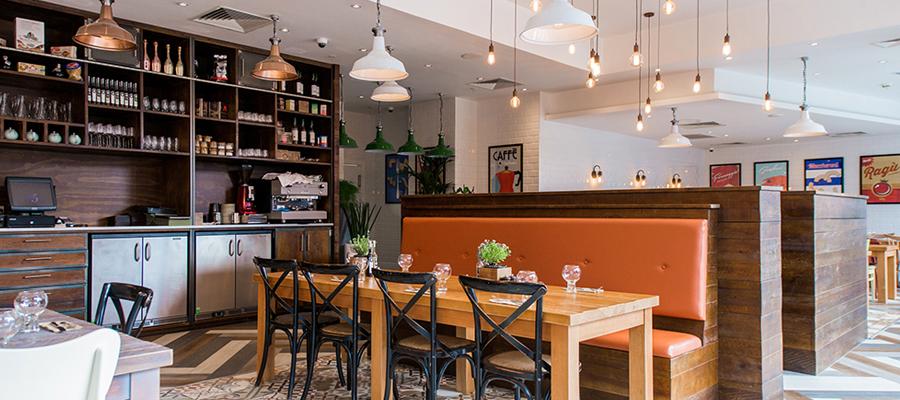Kitchen Lighting
Lighting in a kitchen is an integral part of any kitchen design and should be a key consideration during initial planning. Often referred to as the 'heart of the home' the kitchen is a multi-purpose space and therefore thought should be given to the different tasks and occasions of the space. Lighting should be employed as a way to make your kitchen a more functional and enjoyable space ensuring it caters for practical tasks such as cooking and cleaning yet also works to create an atmosphere peferct for entertaining. Whatever your requirements the lighting scheme should enable and enhance the experience, follow the below steps to help to make a functional and enjoyable Kitchen
Task Lighting
Position recessed downlights in line with the edge of your work surface, spacing approximately every meter will give even coverage from a light source with a 38° beam angle. For very high ceilings fittings need to be closer together to achieve a brightly lit working surface. Only use Downlights for task lighting, Do not use in walkways as this is wasted light. Adding in under cabinet lighting for additional light on work surfaces or in areas where there is no flat ceiling above a task area, LED strip lighting proviides a contemporay line of light while the focused beams from spotlights and interest to plain walls.
Avoid placing downlights over cabinets, as this will onyl shine light on them and not the room. Downlights placed over walkways can create shadows on work surfaces, walkways receive their light from reflections off cabinets and walls and finally avoid pointing fittings directly at seating postions, sitting in the glare of a light is uncomfortable.
Ambient Lighting
A row of pendants provides good ambient light in the centre of the room while a single pendant gives a wash of light over a dining table. Use wall lights to bathe the walls to create a sense of light without lighting the whole area, this can make smaller kitchens feel bigger. If wall lights are not possible angled downlights pointing towards the walls can create the same feeling or can be used to light pictures or feature walls. Lighting placed on top of cabinets to wash the ceilings and give perception of taller ceilings
Feature Lighting
Pendants both break up the space and create cosy areas, use over tables and islands. A single statement pendant provides maximum impact but is also easy to change if tastes or decor change. Layer your lighting and use multiple, and dimming, circuits where possible.This will enable you to have many different lighting states and help create moods for different times of the day.




